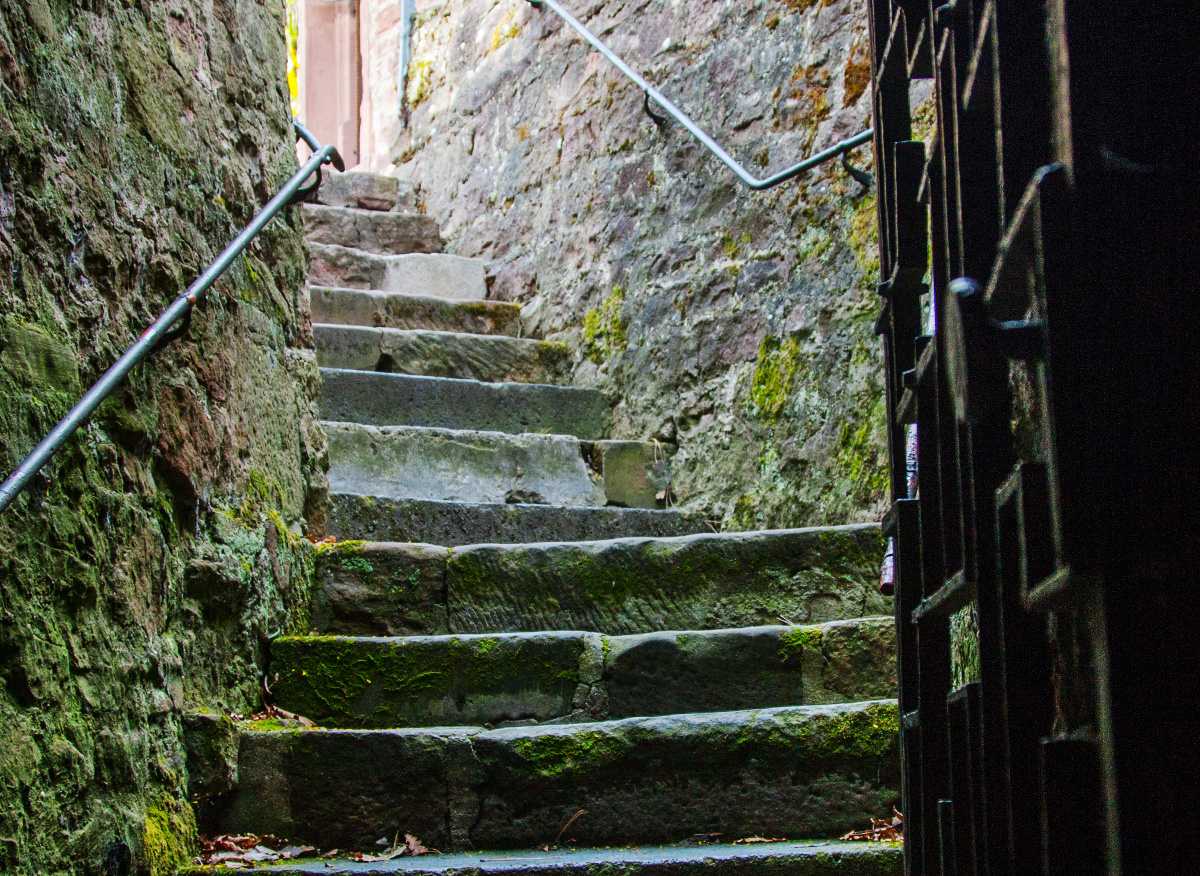
About 60 years after the construction of the Monumentalmikwe in Speyer, dating back to around 1120, the ritual bath in Worms was built according to its model. The mikveh in the Jewry Court in Speyer is the oldest known and at the same time structurally exemplary monumental mikveh.The devastating crusade pogroms of 1096 resulted in an increased sensitivity to questions of ritual purityTahor
טהור . These also found their expression in the construction of the monumental mikvaot in ShUM. The ritual bath in Worms from the years 1185/86 is about one third smaller than the mikveh in Speyer. A donor inscription mentions Josef ha-Levi as the patron. At a high literary level, the inscription reports in rhymed quotations on the construction of this ritual bath complex. The plaque set into a wall in the synagogue courtyard reads as follows:
He dug a well, directed at the vault, made way for it, a straight path, and the wall is resting at its bay…
One generation later Ha-Levi‘s daughter Judith together with her husband donated the women’s shul in Worms.
Follow us on the »marked way« into this unique vault.

The way down to the MikvehAccumulation of water
מקוה first leads via almost twenty steps onto a platform, a vaulted vestibule. To the left there is a small side room. There are several interpretations whether it was a wardrobe, a room for changing clothes, a room for heating stones, or a room with a stove. Opposite the stairs, reaching down to the floor, we look at a twin window of sandstone with a pillar in the middle, at the sides you find columns with small capitals. Upwards we look at a bricked shaft. The way down where, depending on the water level, the more or less full water basin is visible.The water in the large basin is calm. You don’t hear any ripples. An occasional drip perhaps. And yet the water is perceptible. It emits coolness and humidity, and there is a sheen down there. To go down the stairs, we walk through an arch - and we stop, discover scratches in the plaster. These Pietra Rasa decorations date from the 12th century. (With this technique, the mortar was spread between the individual bricks until the wall formed an almost flat surface, but the stone heads remained uncovered. Here, additional joints were made in the damp mortar in order to obtain a joint pattern.) This plaster dates from the 12th/13th century. The plaster was secured in the past months. It is a testimony to the high ornamentation and value of this unique building. We go on...
Via the spiral staircase we reach the water basin. The masonry to the right and left of the stairs is old, darkened, and here and throughout the shaft: mortar remains, also from the 12th century.
Square gaps in the masonry of the bathing bay indicate the location of former scaffolding timbers. The bathing shaft was built, as in Speyer, as a building in a large excavation pit.
The winding stairs take us to the basin. The brickwork right and left of the stairs is old and darkened in the course of time, and throughout there are remains of mortar also from the 12th century. Having reached the water, you will see further steps down into the basin. We stop and imagine what is about to happen. The water has a temperature of 8 to 10 degrees. The idea here to immerse three times leaves us with the feeling that exactly here ritual purity can be achieved. The room is old, dignified, looks back at centuries of history and leaves us with a feeling of spirituality and purity.

We look around. Has this Mikveh from the 12th century remained undamaged? Have there been reconstructions? In the course of centuries the Mikveh was exposed to a changeful history. In the first third of the 19th century the ritual bath was turned into a cesspool for sewerage and garbage. The Jewish community wanted to modernize itself, to abandon old rites. The growing awareness of history and old monuments, however, caused the Jewish religious community to have the Mikveh restored towards the end of the 19th century. The romanesque building regained its status as medieval relic of the ShUM-community Worms. In 1938 during the November pogrom, parts of the Mikveh were destroyed. In connection with the reconstruction of the synagogue in 1957, the ritual bath was refurbished. Columns and window frames were restored; the vault of the vestibule was repaired. The stairs down from the above-ground entrance to the vestibule were changed. These alterations, however, did not interfere with the authenticity of the actual Mikveh, the tower in the earth. We are full of awe, and understand: The Mikveh in Worms is a unique room. It literally comprises centuries. The tower in the earth is engraved in Jewish history, merged with the earth of ShUM and thus ingredient of that which makes the Jewish heritage something special.